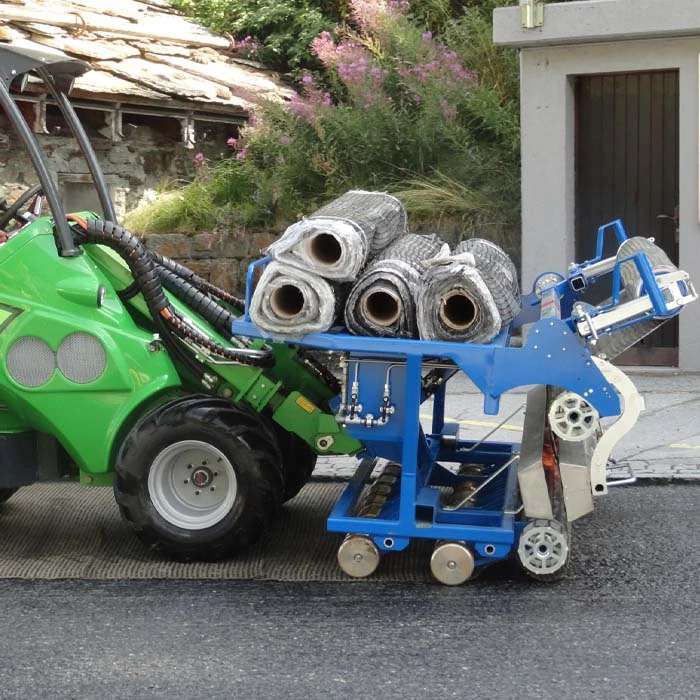In partnership with the University of Texas at Arlington, Simpson Strong-Tie is developing a series of road tests at the Advanced Pavement Research Center to demonstrate the value of using pavement reinforcement grids in conjunction with the repaving of America’s roadways.
Simpson Strong-Tie, the leader in engineered structural connectors and building solutions, today announced the development and launch of a category of pavement reinforcement technologies designed to improve the sustainability, longevity and resiliency of asphalt-paved road surfaces in North America.
In partnership with the University of Texas at Arlington, Simpson Strong-Tie is developing a series of road tests at the Advanced Pavement Research Center to demonstrate the value of using pavement reinforcement grids in conjunction with the repaving of America’s roadways.
More than 173,000 miles of US highways and major roads and an additional 45,000 bridges are currently in poor condition. The $1.2 trillion Infrastructure Investment and Jobs Act includes $550 billion in new funding for roads, bridges, water resources, and climate change mitigation, and specifically provides $110 billion to repair the nation’s aging highways, bridges and roads.
As Infrastructure Investment and Jobs Act funds are deployed to help bring American roadways into the 21st century, additional roadbed technologies are likely to be introduced, including high adhesion surfaces, sound proofing, sensors for self-driving vehicles, and systems for improved safety in extreme weather conditions.
“Whatever type of asphalt is installed, it will remain at the mercy of weather and the constant wear and tear of traffic loads unless it’s also reinforced to avoid cracking, crazing and deformation,” says Simpson Strong-Tie market segment manager Corey Clark. “Simpson Strong-Tie pavement reinforcement solutions provide answers to the safety and comfort needs of all road users by anticipating the deterioration of roads due to traffic and aggressive weather cycles over time.”
Following a 20-year history in Europe, Simpson Strong-Tie Carbophalt™ and Glasphalt™ reinforcement grids have been proven to limit water penetration and crack reflection in road surfaces caused by heavy traffic, weather, and structural fatigue, significantly increasing the service life of the roadbed and eliminating the need for spot interventions like crack bridging and road patching.

Rutting, temporary patching and crack bridging can all become slippery during and after rainfall, compromising tire grip, which increases braking distances and can diminish vehicle control. Roads in poor condition also degrade prematurely, making driving more dangerous while adding to repair and maintenance costs, not to mention traffic backups caused by necessary road repairs.
Using the big rig Pavement Testing Machine (PTM) at the Advanced Pavement Research Center, Simpson Strong-Tie and the University of Texas are testing Carbophalt and Glasphalt reinforcement grids with axle loads between 10,000 and 40,000 lb. to simulate high-traffic areas such as airports, bus stops, toll centers and highways where roadbed wear most often leads to safety hazards.
Featuring a proprietary weave that makes them easier to install on both straight and curved roadbeds, Simpson Strong-Tie pavement reinforcement grids are flexible and saturated with bitumen to ensure superior bonding between layers of asphalt and a positive lock into the pavement. Carbophalt and Glasphalt reinforcement grids are also easily milled and recycled into asphalt aggregate for use in new pavement projects with no decrease in aggregate performance.
For more information on Carbophalt and Glasphalt pavement reinforcement grids, please visit strongtie.com/asphalt.



